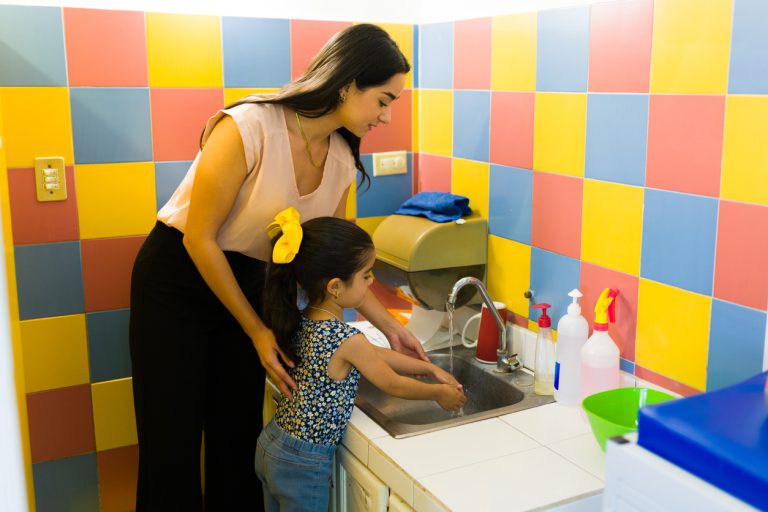Easy Ways to Improve Safety in Child Care Settings
Originally published in the Summer 2022 Issue of Kansas Child Magazine.
Unfortunately, our everyday environments, including child care settings, may expose us to dangerous pesticides and lead, among other environmental hazards, that can impede a child’s mental or physical well-being.
Creating safer and healthier child care settings — free of harmful environmental hazards — ensures that children can learn, play, and grow to their full potential in safe environments.
Eco-Healthy Child Care® (EHCC) partners with child care providers to reduce environmental hazards and keep kids healthy and happy. EHCC offers low-cost and realistic strategies to eliminate from child care settings the lead, pesticides, and harmful chemicals found in many household products.
The science linking exposure to environmental hazards to poor health is strong and continues to grow. Studies have found pesticides and heavy metals, including lead, in child care facilities — which puts both children and staff at risk. Eliminating these threats will improve the health and safety of children and their caretakers, who are often women of childbearing age.
Populations that use and work within child care facilities are more vulnerable to and more likely to be exposed to environmental hazards. Children are more susceptible than adults due to their developing bodies and behaviors like mouthing items, crawling, and laying on the ground.
Approximately 40% of the child care workforce are women of color. Many providers are also low-income. These factors put child care providers at a higher risk of being exposed to environmental hazards, because Black, Latinx, Indigenous, and Brown communities, as well as low-income communities, are more likely to live near hazardous waste sites, polluting industry, and substandard housing.
Eco-Healthy Tips for a Healthier Child Care
You can implement these tips within and around your child care facility and have an immediate impact on the health of the children and staff. All the suggestions are applicable to both center-based providers and family child care providers.
To ensure healthy indoor air quality:
- Increase natural ventilation by opening screened windows and doors when outdoor air quality allows.
- Make sure the heating, ventilation, and air conditioning (HVAC) system is properly maintained by scheduling yearly checkups with an HVAC professional.
- Reduce chemical exposures by avoiding fragranced products, including air fresheners.
To reduce pesticides and pests:
- Only allow children to eat food in the designated meal areas.
- Limit the use of food items for crafts and always store food items in tightly sealed glass or metal containers.
- Fix all leaks promptly and remove standing water.
- Seal or caulk cracks and holes.
To reduce exposure to harmful chemicals in plastics:
- Look for products (toys, food containers, dinnerware) labeled PVC-free, phthalate-free, and BPA-free. Avoidsoft vinyl plastic, hard clear plastic, and styrofoam products.
- Never heat or microwave food or drink in any plastic containers or plastic wrap, even if the container says “microwave safe.”
- Use glass baby bottles with a silicone sleeve whenever possible. If glass is not an option, use milky, opaque plastic bottles and sippy cups labeled “BPA free.”
Visit the EHCC website to learn more low-cost, eco-healthy tips. All of our resources are available in Spanish too!
-

Kathy Attar
Program Manager, Eco-Healthy Child Care®, Children’s Environmental Health Network
Kathy has worked with the Children’s Environmental Health Network since March 2018. She brings over 15 years of experience on issues related to environmental health. She has worked to increase the public’s engagement in the policy process, as well as awareness of how environmental hazards impact communities’ health. Kathy is firmly committed to protecting the health of communities most at-risk from environmental hazards by advocating for policies that reduce exposure. She holds a master’s degree in public health from UCLA.






